Discover Malaga Spain; A Local
Guide to Travel, Culture,
and Hidden Gems
Welcome to Malaga Spain.
Discover the beauty, culture, and soul of one of Spain´s most captivating coastal cities.

My name is Anton, and I live just outside the city. Over the years, I've wandered its winding old town streets, relaxed on beautiful beaches, explored hidden alleyways, and tasted more tapas than I can count. The city, has become a part of me, and now I want to share it with you.
Malaga Spain is a sun-drenched city on the Costa del Sol, where golden beaches meet centuries of history and a thriving modern culture. Once known mainly as the gateway to southern Spain, Malaga has transformed into one of Europe’s most exciting travel destinations. Here you’ll find Moorish castles, colourful markets, art museums like the Picasso Museum, and a vibrant food scene filled with tapas bars and seaside chiringuitos.
Whether you’re planning a short city break or a longer adventure through Andalusia, this complete guide will help you discover what to do, where to stay, and how to make the most of your time in this vibrant city.
Start planning your trip → [What to do in Málaga]
Why Visit Malaga Spain
Few cities in Europe offer such a perfect blend of culture, coast, and convenience as Malaga Spain. Blessed with more than 300 days of sunshine a year, this lively port city combines its rich Andalusian heritage with a fresh, creative energy that surprises many first-time visitors.
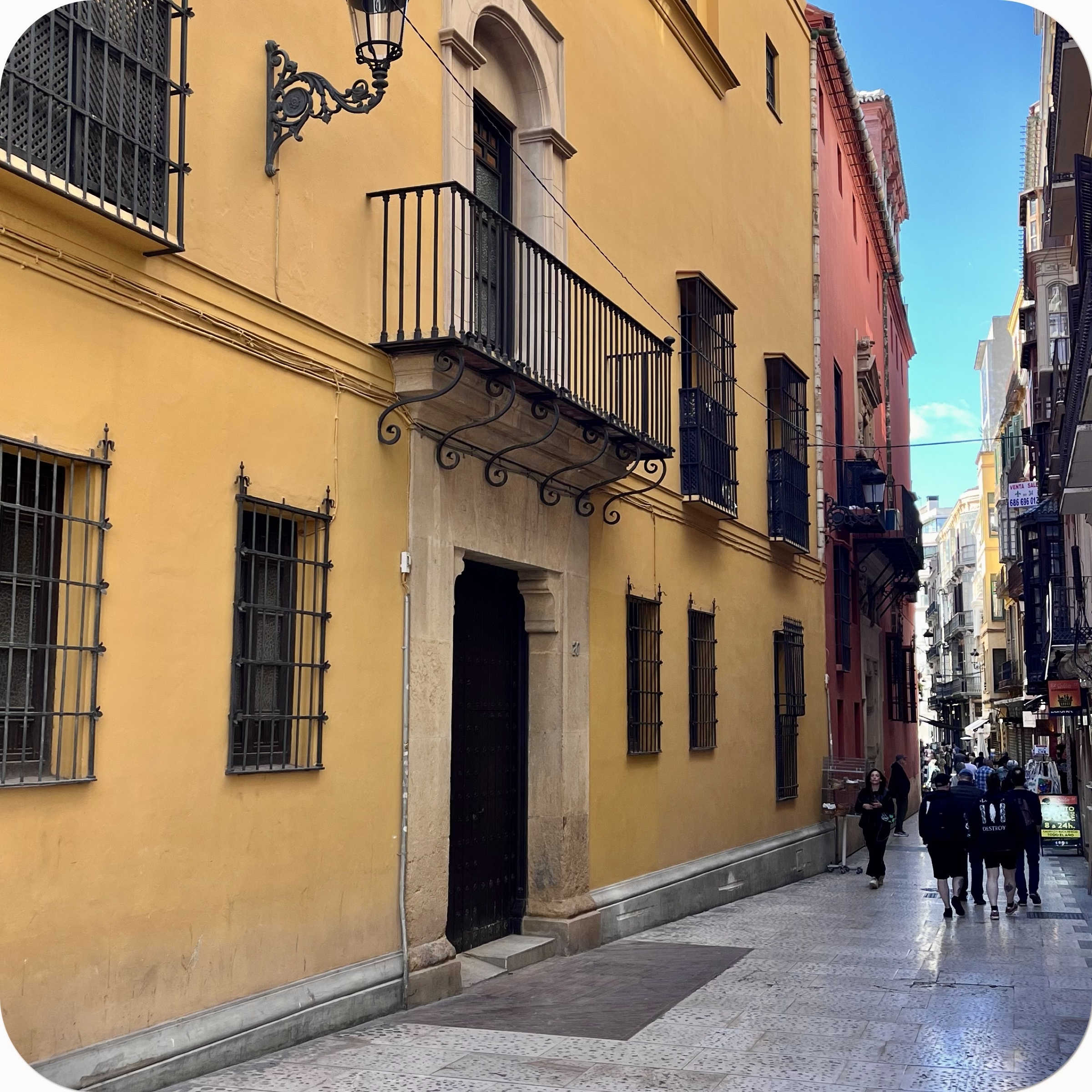

Malaga’s historic centre is filled with architectural treasures — from the Alcazaba fortress and Roman Theatre to the majestic Cathedral of Malaga. Art lovers can follow in the footsteps of Picasso, the city’s most famous son, through galleries and world-class museums like the Carmen Thyssen Museum and the Centre Pompidou.
When it’s time to unwind, the Malagueta Beach and nearby neighbourhoods such as Pedregalejo and El Palo invite you to enjoy authentic Spanish seaside life — complete with freshly grilled espetos (sardines) and chilled local wine.
Easily accessible by air and train, the city is not just a gateway to the Costa del Sol — it’s a destination in its own right, perfect for travellers seeking art, sunshine, and unforgettable Mediterranean experience.
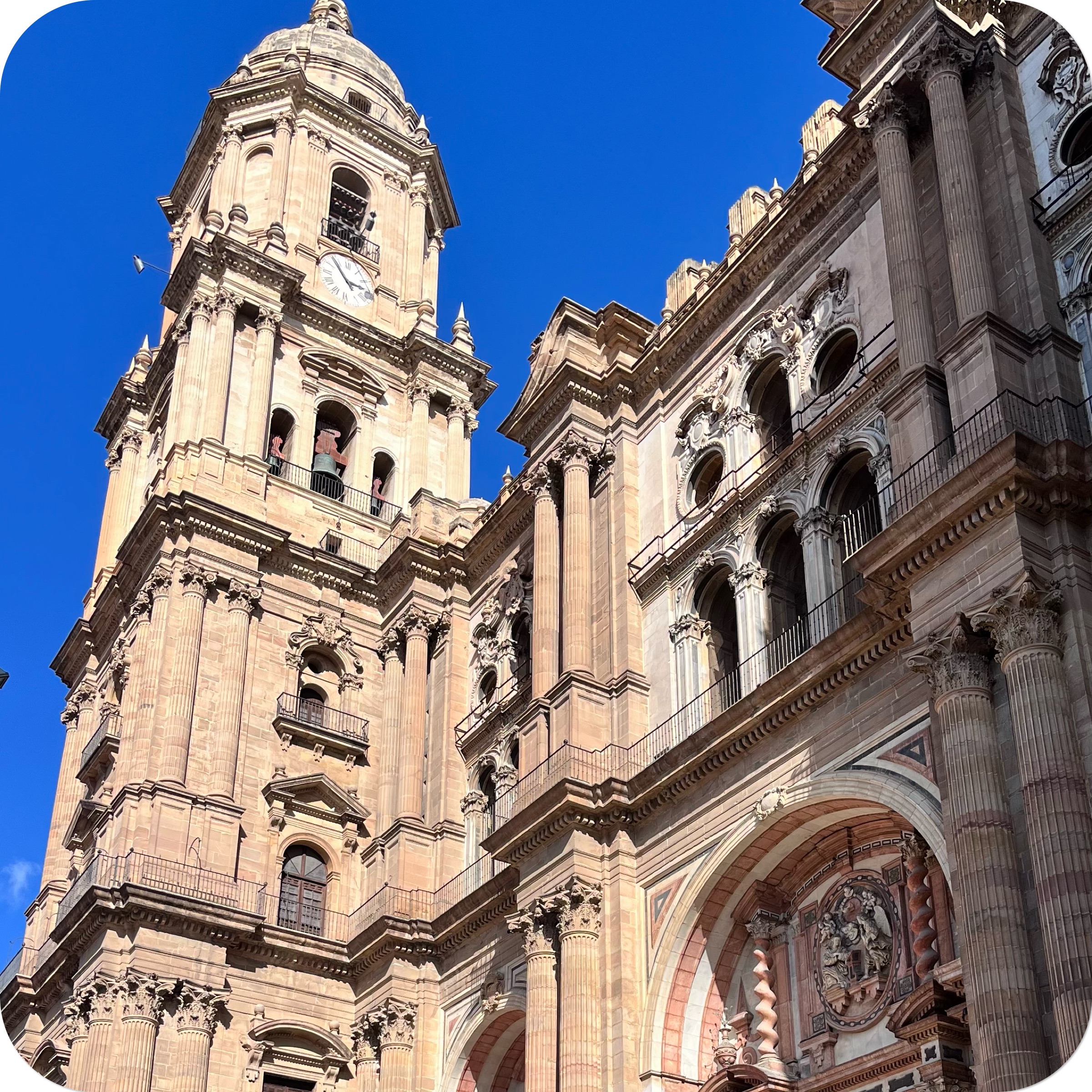
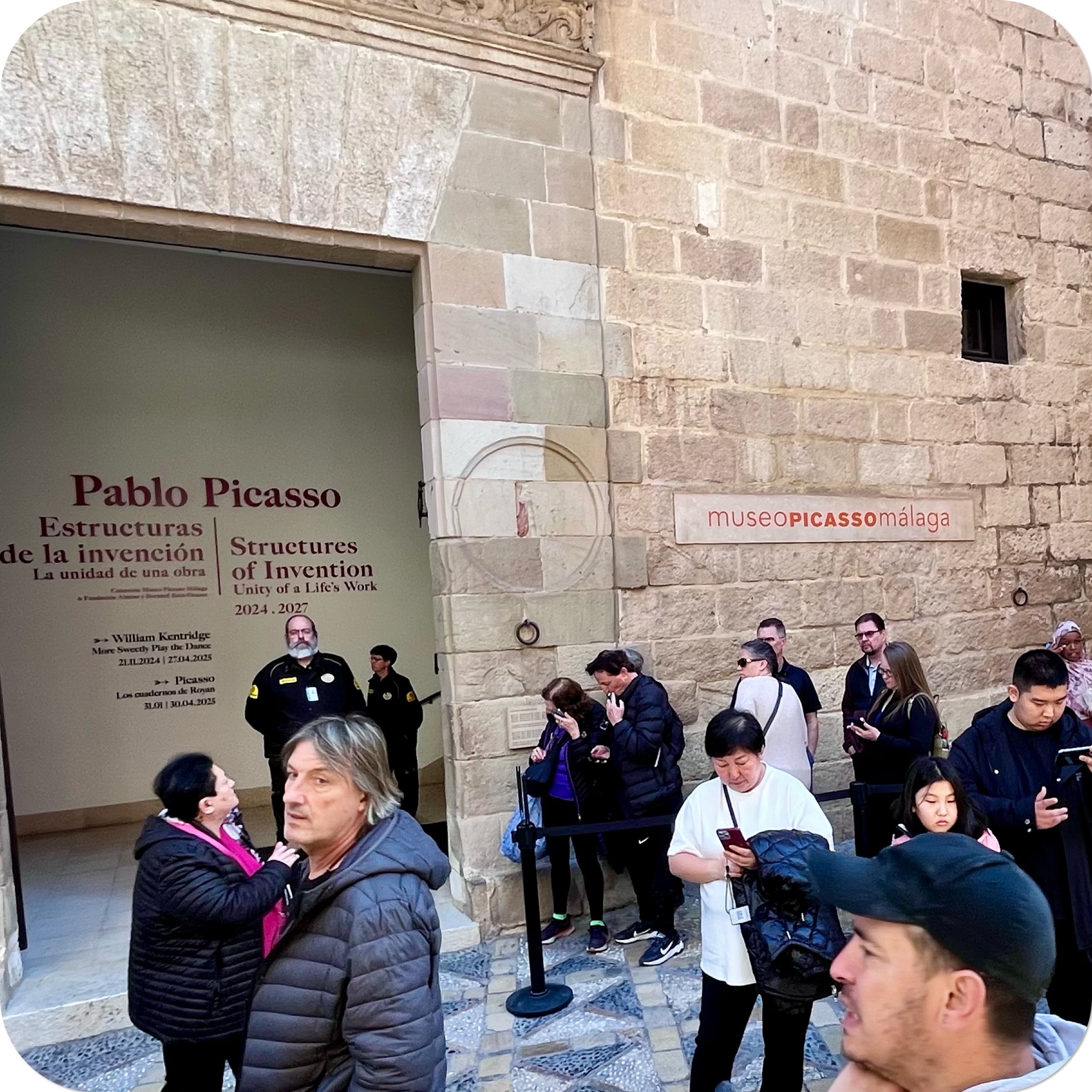
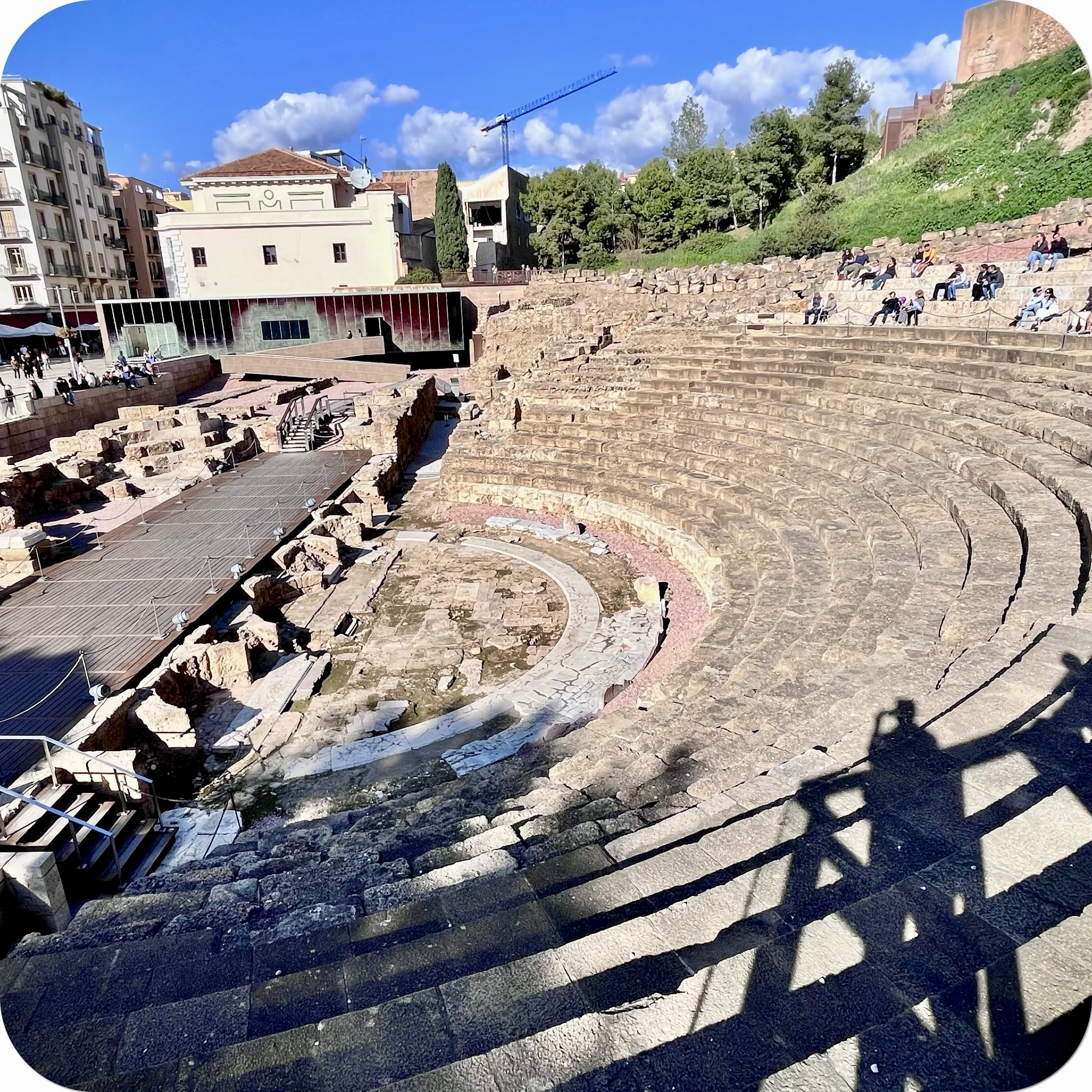
QUICK FACTS AND MAP
Before you dive into exploring, here are a few quick facts to help you get your bearings.
This Spanish coastal city sits on the southern Mediterranean coast of Andalusia, about 350 kilometres east of the southern border of Portugal. It’s one of Europe’s oldest port cities — yet it feels modern, walkable, and full of life. The airport (AGP – Málaga-Costa del Sol Airport) is well-connected to most major European destinations, making it an easy weekend or long-stay getaway.
- Language: Spanish (English widely understood in tourist areas)
- Currency: Euro (€)
- Population: Around 580,000
- Safety: Generally safe, with typical city precautions
- Best trip length: 2–4 days for highlights, longer for day trips
Use the map below to locate top attractions and beaches..
View the interactive map →
BEST TIME TO VISIT
Thanks to its Mediterranean climate, the region enjoys pleasant weather year-round — but some seasons suit certain travellers better than others.
Spring (March–May) and (my favourite time of the year) autumn (September–October) are ideal, offering warm days, clear skies, and fewer crowds. These months are perfect for sightseeing, outdoor cafés, and cultural festivals like La Noche en Blanco or Malaga Film Festival.
Summer (June–August) brings long sunny days and lively beach life, especially during the Feria de Málaga in August. However, temperatures can rise above 30°C, and beaches get busy.
Winter (November–February) is mild compared to the rest of Europe, with daytime highs around 17°C — great for museums, walking tours, and exploring without heat or crowds.
Whenever you visit, The city's charm remains constant: blue skies, sea views, and a relaxed pace of life.
Compare each month’s weather → [Malaga weather by month]
THINGS TO DO AND WHAT TO SEE IN MALAGA
If you’re wondering what to do in Malaga or what to see during your visit, you’re in for a treat. This vibrant coastal city offers the perfect mix of history, culture, and sunshine, with something to enjoy in every corner.
Explore ancient landmarks like the Alcazaba fortress and the Roman Theatre, admire panoramic views from the Castillo de Gibralfaro, and discover some artistic soul in the Picasso Museum or the Centre Pompidou by the harbour. Stroll through the lively Atarazanas Market, or relax by the palm-lined Malagueta Beach with a plate of fresh espetos and a glass of local wine.
These are just a few of Malaga’s highlights — from Moorish castles to modern art and Mediterranean flavours.
Discover what makes this city shine → [What to do in Malaga]


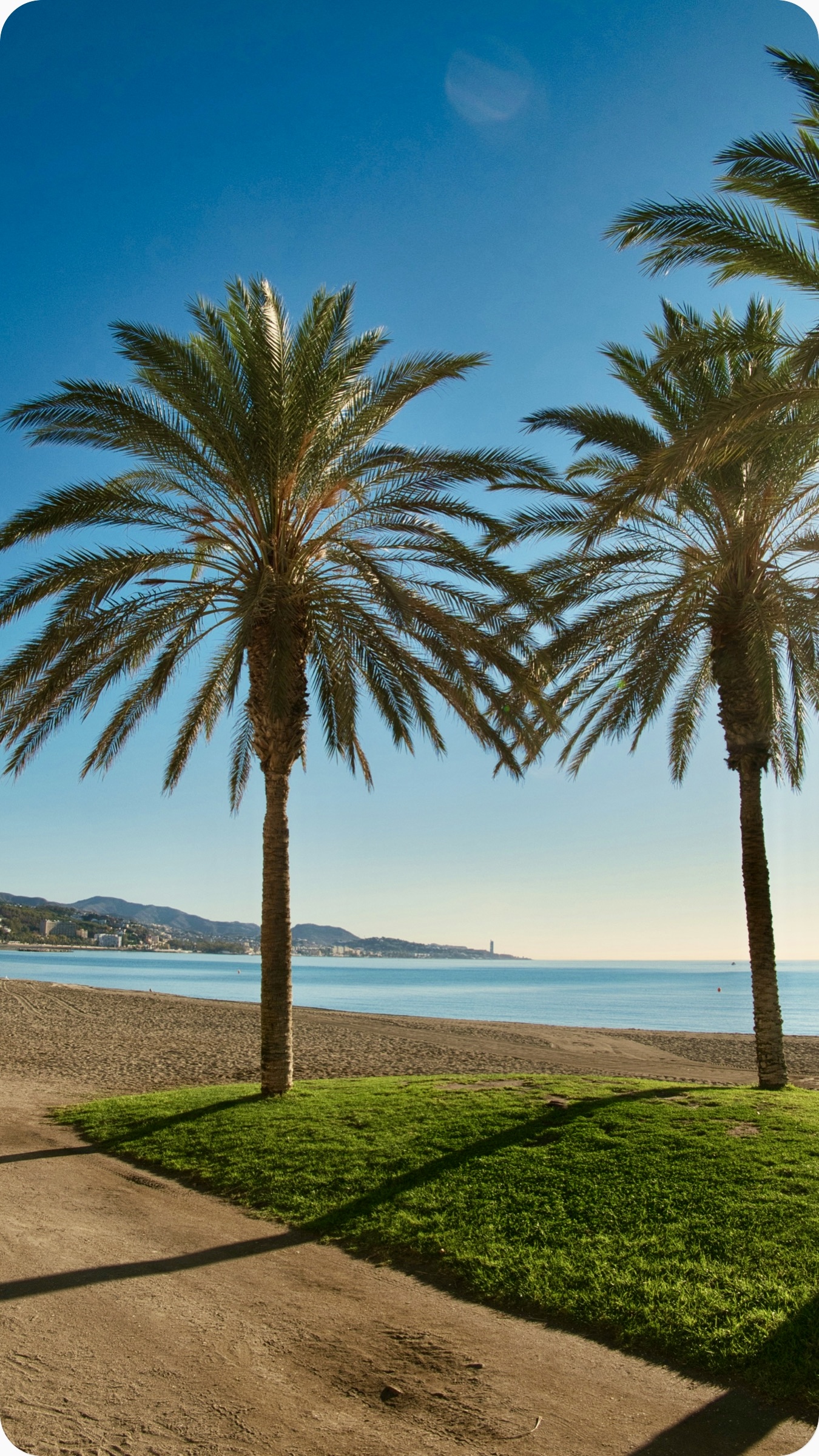
GETTING AROUND
One of the best things about Malaga Spain is how easy it is to get around. The historic centre is compact, mostly flat, and perfect for exploring on foot — from the Cathedral to Atarazanas Market and the harbour promenade.
For longer distances, Malaga’s public transport system is efficient and affordable. The metro connects key areas such as El Perchel and Teatinos, while local EMT buses run frequently to beaches, shopping centres, and nearby neighbourhoods. Taxis and rideshare services like Bolt or Uber are reliable for late nights or quick transfers.
Cycling has become increasingly popular, with bike lanes along the coast and city bike rentals available at many points. If you’re driving, parking is easiest in underground garages around Muelle Uno or Plaza de la Marina.
Learn all options → [Malaga Public Transport Guide]
NEIGHBOURHOODS AND WHERE TO STAY IN MALAGA
Each area of Malaga Spain has its own personality, so where you stay can shape your entire experience. Here’s a quick guide to the city’s main neighbourhoods:
- Centro Histórico: Malaga Old Town is the lively heart of the city, ideal for first-time visitors. You’ll find charming boutique hotels, rooftop terraces, and easy access to monuments and museums.
- Soho: Malaga’s artistic quarter, known for its colourful street art, trendy cafés, and creative vibe — perfect for young travellers and digital nomads.
- La Malagueta: Steps from the beach and close to Muelle Uno (Port). A great choice for couples or families who want sea views and relaxed evenings by the water.
- El Palo & Pedregalejo: Former fishing districts east of the centre, now loved for their local atmosphere, seaside chiringuitos, and value guesthouses.
- Teatinos: A more residential area with budget hotels, student life, and easy metro access — ideal for longer stays or tight budgets.
Wherever you stay, you’re never far from the beach, culture, and Malaga’s sunny charm.
Compare top hotels by area → [Where to Stay in Malaga]
FOOD AND DRINK IN MALAGA
Eating well is a big part of the Malaga experience. The city’s food scene blends traditional Andalusian flavours with modern creativity — all enjoyed at a relaxed Mediterranean pace.


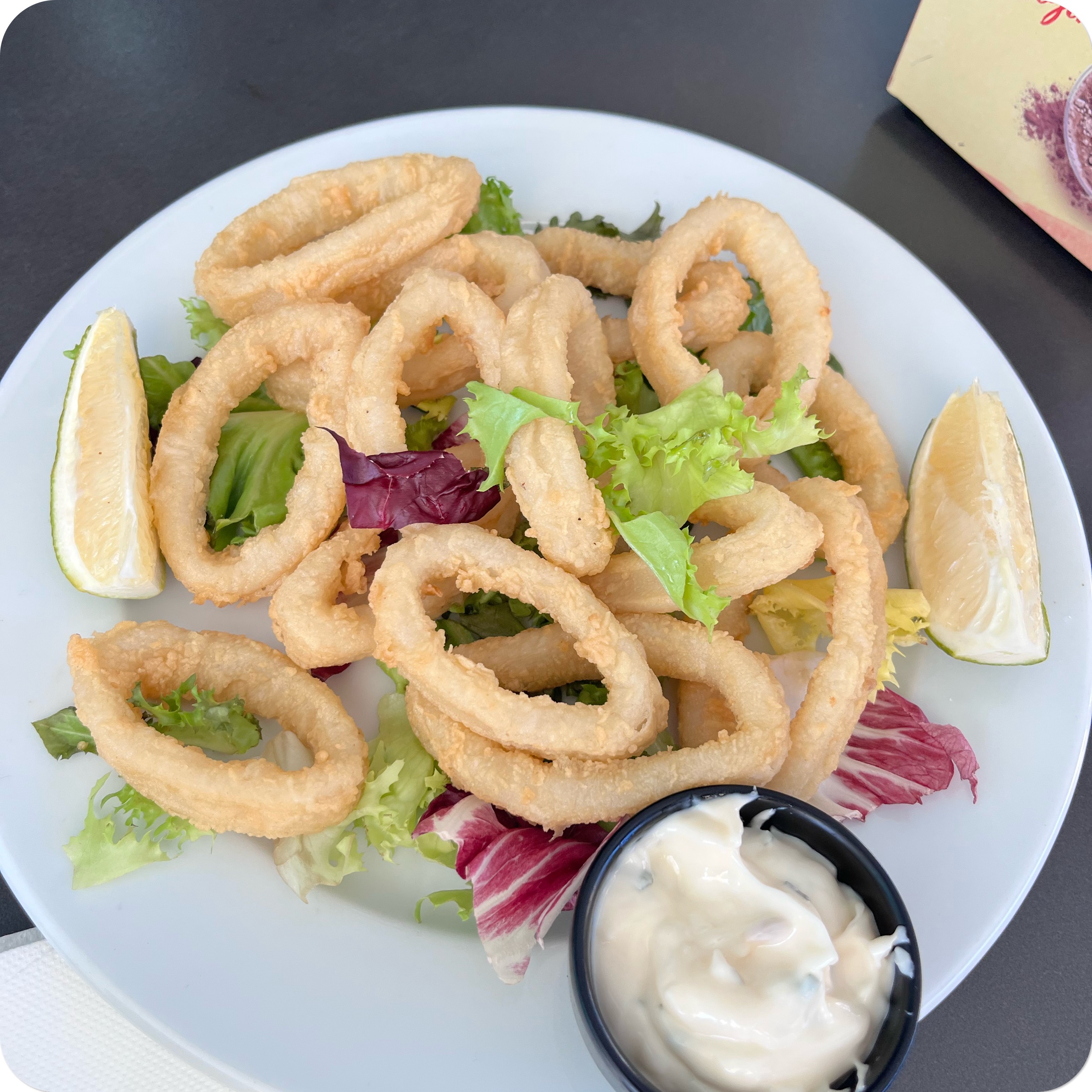
Start with Malaga’s most iconic dish, the espetos — sardines skewered and grilled over an open fire at seaside chiringuitos. I often go to Atarazanas Market to stock up on fresh local produce like olives, cheeses, vegetables, meats and fresh seafood straight from the coast. And while you there sit down at Bar Mercado and order pescaito frito, a traditional Andalusian coastal dish and one of my favourite things to do at the market.
Tapas bars fill every corner of the old town, serving favourites like boquerones, croquetas, ajoblanco (a chilled almond soup), and a vegan favourite, another vegan delight is berenjenas con miel (fried aubergine with honey).
Don’t miss the city’s sweet Pedro Ximénez wine, often enjoyed as a dessert or with cheese. Malaga also has a growing number of rooftop bars and modern restaurants in areas like Soho and Muelle Uno (the harbour area), where you can dine with sea views. The port is my one of my favourite place for a relaxed afternoon. Treat yourself to a tinto de verano or a vermut at one of many restaurants whilst watching the boats come and go.
Whether you’re a foodie or just love casual seaside dining, Malaga’s cuisine is simple, social, and full of heart.
Taste the local flavour → [Top Tapas Bars in Málaga]
BEST DAY TRIPS FROM MALAGA
One of the best things about Malaga is how close it is to some of Andalusia’s most beautiful white washed villages and landscapes. With excellent transport links, it’s easy to explore beyond the city on a series of unforgettable day trips.
A favourite of mine and for many visitors is the Caminito del Rey, a dramatic wooden boardwalk clinging to the cliffs of El Chorro Gorge — a thrilling experience just an hour away by train or car. To the east, the seaside town of Nerja and the whitewashed village of Frigiliana offer stunning coastal views and charming old streets.
Heading inland, Ronda is a must-see with its famous bridge spanning a deep gorge, while Granada beckons with the majestic Alhambra Palace. You can also visit Mijas Pueblo, Marbella, Córdoba, or even Seville on longer day tours.
Whether you love nature, history, or architecture, Málaga makes a perfect base for exploring southern Spain.
See all nearby gems → Day Trips from Malaga

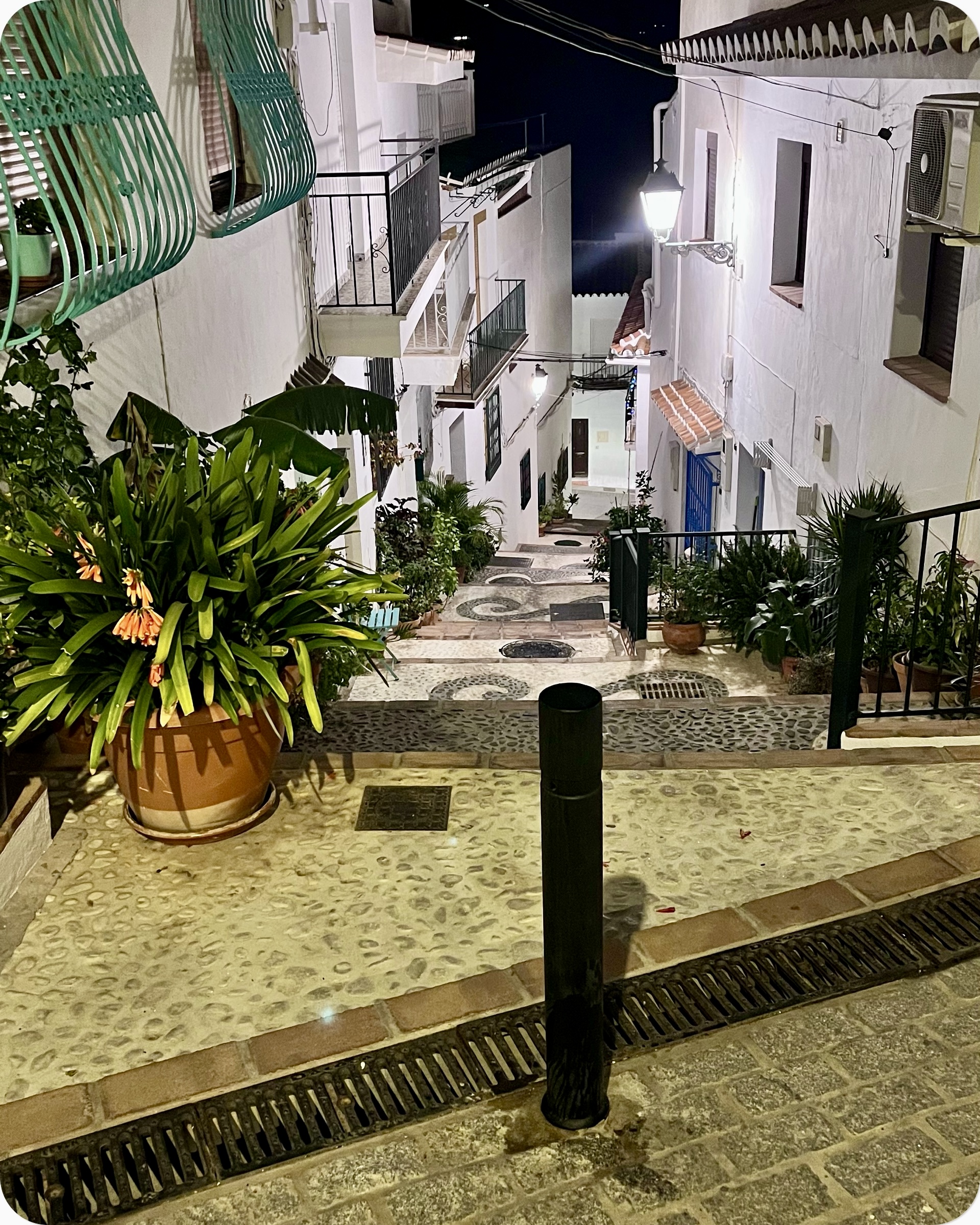
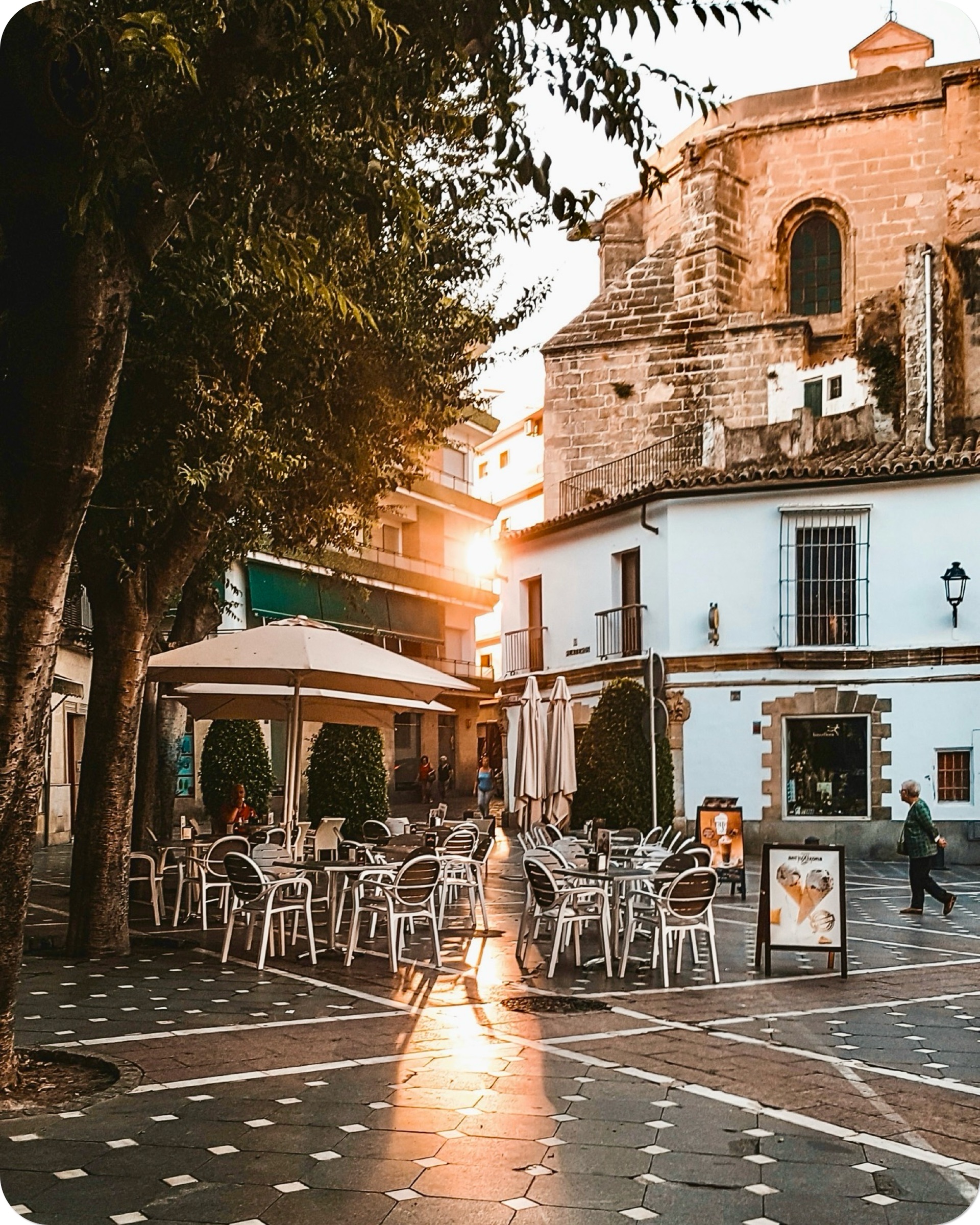
COSTS AND BUDGET TIPS
Travelling to the capital of Costa del Sol can be as affordable or as indulgent as you want — the city caters to every type of traveller.
- Budget travellers can enjoy local tapas for under €2 each, grab a menu del día (set lunch) for around €12, and find comfortable hostels or guesthouses from €30–€40 per night.
- Mid-range visitors will find excellent 3–4-star hotels from €70–€120 per night and casual dinners with drinks for €25–€35 per person.
- Luxury stays in boutique hotels or beachfront resorts start around €180+ per night.
Many free attractions — including the Roman Theatre, Cathedral courtyard, and beaches — make it easy to enjoy the city without overspending.
Save money by using local buses, visiting landmarks on free-entry Sundays, (after 2pm) and eating where locals go.
Save while exploring → [Malaga on a Budget]
SAFETY AND PRACTICAL TIPS
Malaga Spain is one of the safest and most welcoming cities in Andalusia. Petty theft such as pickpocketing can occur in crowded tourist spots, especially around the train station, Calle Larios, or busy festivals, so keep valuables close and stay alert — just as you would in any European city.
Tap water is safe to drink, (personally I don't) and healthcare services are excellent. Pharmacies are easy to find, usually marked with a green cross, and many staff speak English. Electrical outlets use the standard European 230V / Type F plugs, so bring a suitable adapter if needed.
For internet and calls, use eSIM options for affordable data. For local SIM cards you may/or not required to provide your passport and NIE number.
Malaga’s beaches are patrolled in summer and clearly marked for safe swimming.
With a bit of common sense, you’ll find Malaga extremely easy to navigate and stress-free to explore.
EVENTS AND FESTIVALS IN MALAGA
Throughout the year, Malaga Spain bursts with festivals that celebrate its deep Andalusian spirit. Each season brings something special to see and experience.
- Semana Santa (Holy Week): Processions with music, candles, and ornate floats fill the streets every Easter.
- Feria de Málaga (August): A week-long city-wide party with flamenco, horses, fireworks, and late-night dancing — the highlight of Malaga’s summer.
- Malaga Film Festival (March/April): A celebration of Spanish cinema that attracts actors and directors from across the country.
- La Noche en Blanco (May): Museums, galleries, and monuments open late into the night with free events.
- Christmas Lights (late Nov–Jan): Calle Larios glows with one of Europe’s most impressive festive light shows.
Attending a local festival adds colour and authenticity to any trip — just be sure to book accommodation early during these periods.
VISITING MALAGA WITH KIDS, ACCESSIBILITY & LGBTQ+ TIPS
The city is a family-friendly, inclusive, and welcoming destination for every traveller. Parents will find plenty to keep children happy, from interactive museums like the Museo Automovilístico y de la Moda (Car and Fashion Museum) to fun days at Malagueta Beach or the Bioparc Fuengirola, just a short train ride away.
The city’s paseos (seafront promenades) are stroller-friendly, and many public areas are flat and easy to navigate. Most attractions and buses provide wheelchair access, and the local tourism office publishes an updated Accessible Malaga guide with detailed information on ramps, elevators, and adapted facilities.
Malaga is also known for its open-minded and inclusive atmosphere, hosting events such as Torremolinos Pride and offering many LGBTQ-friendly cafés and bars in the historic centre and along the coast.
It’s a city that genuinely welcomes everyone, combining warmth, safety, and accessibility.
GETTING THERE: FLIGHTS, TRAINS & BUSES
Reaching Malaga Spain is quick and convenient thanks to its excellent transport links. The city’s airport — Málaga-Costa del Sol (AGP) — lies just 8 km from the centre and welcomes daily flights from across Europe, including London, Paris, Amsterdam, and major Spanish cities like Madrid and Barcelona. Low-cost airlines such as Ryanair, EasyJet, and Vueling offer frequent connections year-round.
If you’re travelling within Spain, the high-speed AVE train connects Malaga to Madrid in about 2½ hours and to Barcelona in under 6 hours. Long-distance buses also link the city to Granada, Seville, Córdoba, and Ronda, Nerja, often at lower prices.
Once you arrive, getting into town is easy — a direct train or airport bus will take you straight to the centre in about 15 minutes.
Find your easiest route → [Getting from airport to city centre]
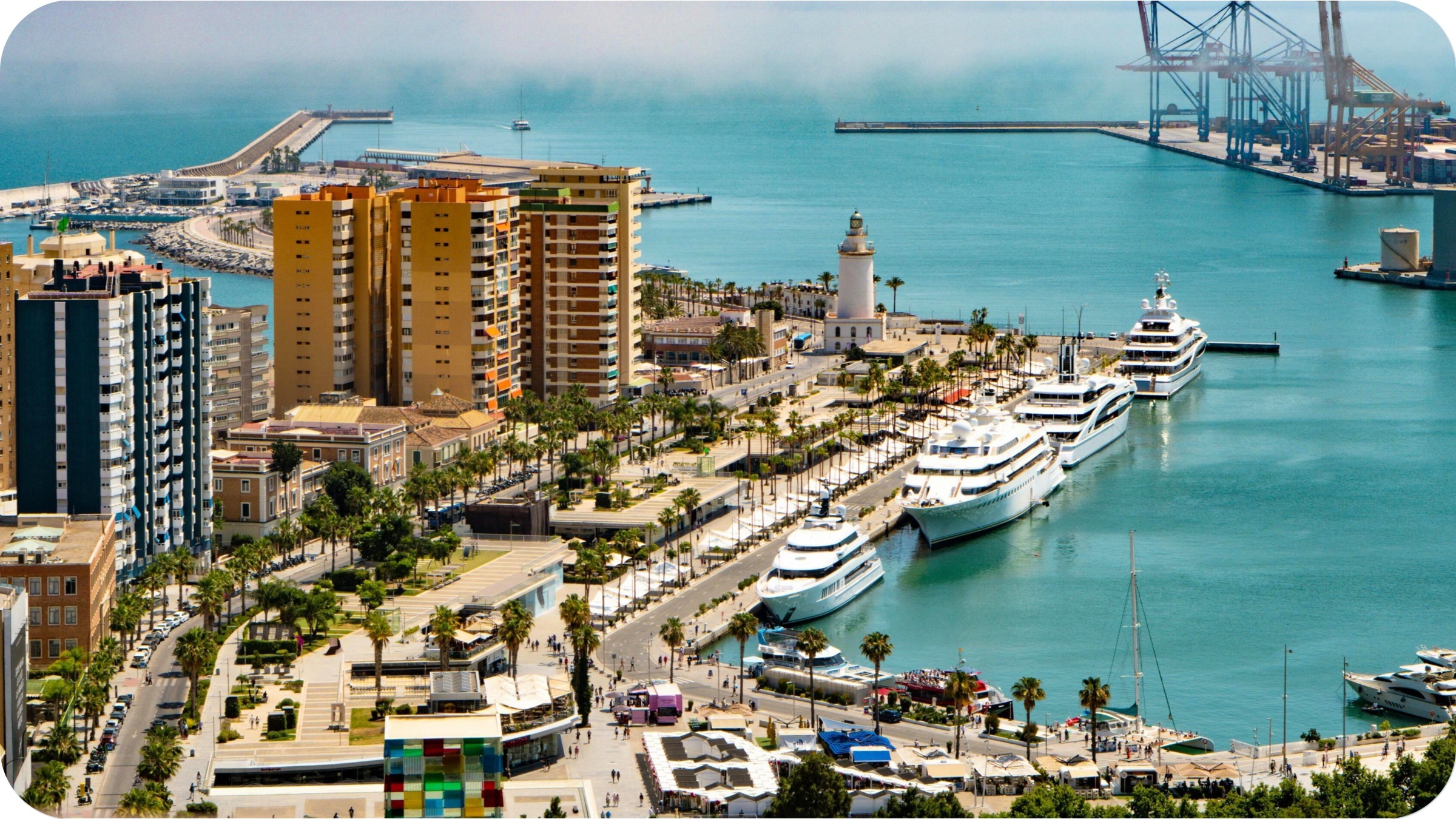
SBI - "Solo Built It" website in progress... lots more to come from a locals perspective.